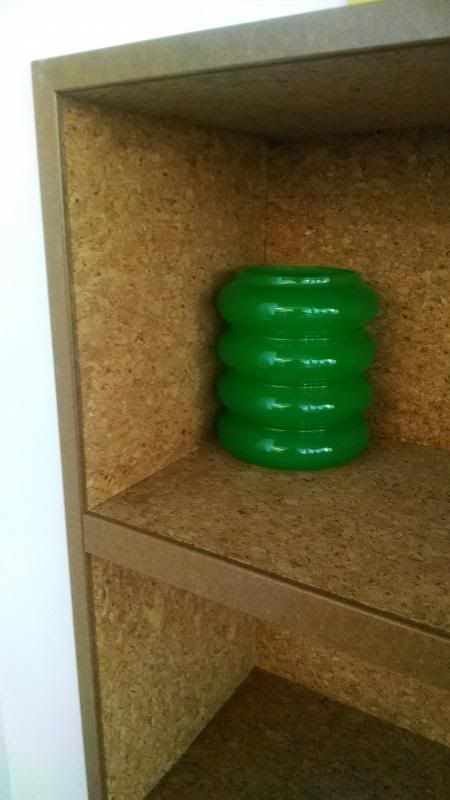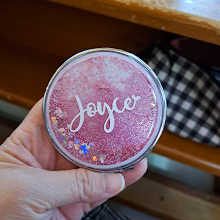I took this quiz - Cry Decoder: What's your baby trying to tell you? and scored 6 out of 6 points.
1. Your baby's cry is repetitive, loud, and just gets louder. It eventually sounds frantic.
Your baby is trying to tell you:
a. I'm gassy.
b. I'm hungry. (Correct!)
c. I'm ready for a nap.
d. I need some cuddling.
"Your baby's hunger cries are repetitive and don't let up until he gets what he wants – the breast or a bottle. Then they'll stop completely," says Seattle pediatrician Wendy Sue Swanson. "Parents get to know what this cry sounds like pretty quick."
Sometimes babies get so worked up in their cries of hunger that when they begin to nurse or take a bottle, they take in too much air. This can lead to gas and even more crying. As you learn to recognize your baby's "hungry" cry, you can start your feedings before your baby gets too agitated.
Other clues your baby may be giving you: Smacking his lips, rooting (a newborn reflex that causes babies to turn their head toward your hand when you stroke their cheek), and putting his hands to his mouth.
2. Shortly after eating, your baby lets out piercing, intense cries.
Your baby is trying to tell you:
a. I'm ready for my post-meal nap.
b. I'm still hungry.
c. I need to be burped. (Correct!)
d. I need a new diaper.
Loud fussing right after feeding is often tied to tummy pain, which can make your baby miserable until she works it out. Try burping your baby – giving small repeated pats on her back – to bring some relief. Just remember to keep a cloth handy for spit-up. Some parents prefer holding their baby against their chest or shoulder; others prefer sitting their baby upright and cradling their baby's chin with one hand and burping with the other.
Many parents also swear by over-the-counter anti-gas drops for babies. "There isn't much data to support their use, but there's no harm in using them as directed," says Swanson. Still it's a good idea to get your doctor's okay before using anti-gas drops for your baby.
Other clues your baby may be giving you: She's bringing her knees up to her chest. Try helping her eliminate the gas by laying her on her back, holding her feet, and moving her legs in a gentle bicycling motion.
3. Your baby's cry is inconsistent and may alternate between laughter and fussing. Eventually it intensifies.
Your baby is trying to tell you:
a. I'm starting to get hungry.
b. I need to be burped.
c. I need a new diaper.
d. I'm overstimulated. (Correct!)
Your baby is taking in the world around him – the lights, the noise, being passed from person to person. He may enjoy the stimulation, but it can start to be too much to process, which is why he sometimes alternates between laughing and crying. This behavior, followed by intensified crying, can be your baby's way of saying, "I've had enough."
Other clues your baby may be giving you: He turns his head away from stimulating sights and sounds. Many newborns enjoy the security of being swaddled when the world gets overwhelming. If your baby's too old for swaddling or doesn't like it, try retreating to a serene spot and letting your baby calm down for a while.
4. Your baby's crying is fairly soft, and it starts and stops. You may be able to soothe your baby, but eventually the crying builds up to a steady jag.
Your baby is trying to tell you:
a. I'm really tired and need to go to sleep. (Correct!)
b. I'm bored. Let's do something else.
c. I'm colicky.
d. I'm having tummy trouble.
Parents often overlook the sleepy cry when it comes at a time they don't expect their baby to be tired. "Some babies have sleepy days," says Swanson. "They may be growing or just extra tired." Even if your baby just had a nap an hour ago, if her cries aren't the piercing kind and she can be comforted for a little while, she may be telling you she's ready for a rest.
Other clues your baby may be giving you: She's rubbing her eyes, crying while her eyes start to close, and yawning.
5. Your baby's cry sounds unusual, different from any of the regular crying you're used to hearing.
Your baby's trying to tell you:
a. I'm starting to teethe.
b. I'm more tired than usual.
c. I don't feel well. (Correct!)
d. I need extra cuddles.
The cry of a sick baby tends to be distinct from one caused by hunger or frustration. If your baby's crying "just doesn't sound right," or if he is inconsolable and has been crying for several hours, trust your instincts and call your baby's doctor.
Other clues your baby may be giving you: He has a fever; he isn't hungry; he's difficult to wake up or put to sleep; he isn't going through his usual amount of diapers; or he just isn't behaving like his usual self.
6. You've tried every trick in the mommy book and you still can't stop your baby's strong, steady cries. And this is nothing new. The crying can happen every day and last for hours.
Your baby is trying to tell you:
a. I have colic. (Correct!)
b. I need more stimulation.
c. I'm hungry.
d. I'm overly tired.
Colic is a term used to describe excessive crying in an otherwise healthy baby. If your baby is younger than 5 months old and cries for more than three hours in a row on three or more days a week for at least three weeks, chances are he's colicky. Colic isn't a disease and won't cause your baby any long-term harm, but it's a tough thing for both you and your baby to go through.
Other clues your baby may be giving you: A baby with colic cries inconsolably and excessively, often at the same time of day, frequently in the late afternoon or evening. If your baby has colic, his belly may also look enlarged and he may alternately extend or pull up his legs and pass gas as he cries.
"These cries can be intense for babies as well as parents," says Swanson. "Remember that when you get tired or frustrated from your baby's cries, it's perfectly okay to put your baby down in a safe place and walk away for a few minutes to get a break."
The good news? It doesn't last forever. Colic tends to peak around 6 weeks, then improves significantly between 3 and 4 months. By 5 months, your baby should be past it.


















































